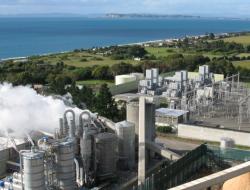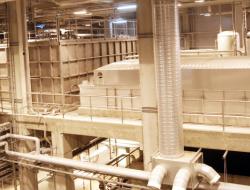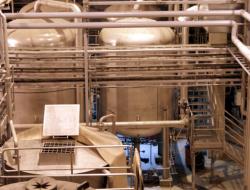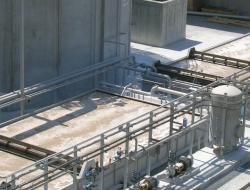FlooRO™ Reverse Osmosis
As water is one of the most important raw materials in the power generation process, boiler feed water must be treated correctly to eliminate the salt content from the feed and to protect the boiler and downstream equipment from scaling and corrosion. Reverse Osmosis provides the finest filtration available. FlooRO™ Reverse Osmosis is used to produce water that meets our clients’ highest demands for water quality. By choosing the appropriate treating solution of the boiler feed water you can cut overall costs and improve the plant operating efficiency.
FlooRO™ Membrane Desalination
FlooRO™ Reverse osmosis is a membrane desalination technique. The water is fed under pressure trough a membrane, which lets the water through but traps the salts. The process of FlooRO™ Reverse Osmosis allows the removal of particles as small as ions from a solution. Reverse osmosis is used to purify water and to remove salts and other impurities to improve the colour, taste or other properties of the fluid. The most common use for reverse osmosis is in purifying water. It is used to produce water that meets the most demanding specifications that are currently in place for e.g., boiler feed water. Depending on the water quality needed it is possible to polish the water with e.g., a FlooMB™ Mixed Bed Ion Exchanger
Desalination is an important process for boiler feed water. As the water source can vary (e.g., municipal tap water, surface water from river) various degrees of treatment, and therefore different technologies, are needed. We at Flootech can provide you with a custom-made solution for each plant operation.
FlooRO™ Reverse Osmosis Process
Reverse osmosis uses a membrane that is semi-permeable, allowing the water to pass through it, while rejecting the contaminants that remain. FlooRO™ Reverse Osmosis technology uses a process known as cross-flow to allow the membrane to continually clean itself. As some of the fluid passes through the membrane the rest continues downstream, sweeping the rejected contaminants away from the membrane. The process of reverse osmosis requires a driving force to push the fluid through the membrane and the most common force is a pressure from a pump. The higher the pressure, the larger the driving force needed. As the concentration of the fluid being rejected increases, the driving force required to continue concentrating the fluid increases.
FlooRO™ Reverse Osmosis Water Desalination System
An entire FlooRO™ Reverse Osmosis water desalination system consists of a pre-treatment section, the desalination section and a post-treatment section. The desalination system is a complete plat with an inlet for feed water and outlets for permeate and concentrate. Reverse osmosis system performance is typically characterized by two parameters, permeate (or product) flow and salt rejection.
- Pressure holdings can be made of either stainless steel or glass fibre.
- One pass or double pass FlooRO™ Reverse Osmosis available
- Several membrane alternatives
- CIP unit included
- Produce high-quality demineralized water
- Minimal chemical consumption
- Low operation and maintenance costs
- Environmentally friendly technique
- High production capacity to space ratio



